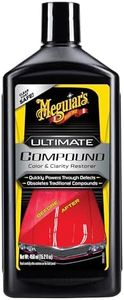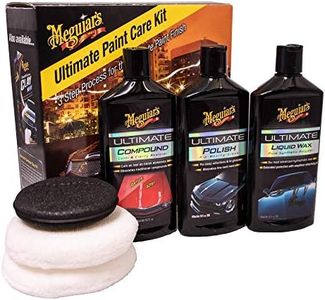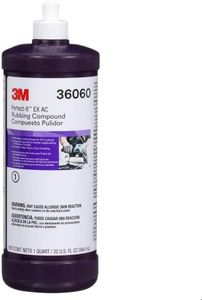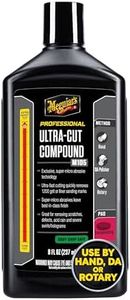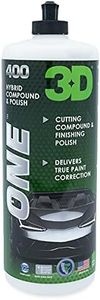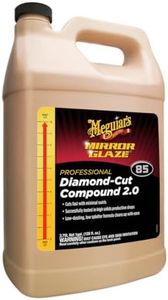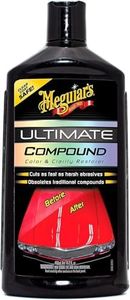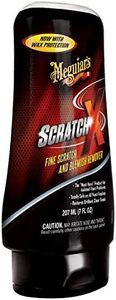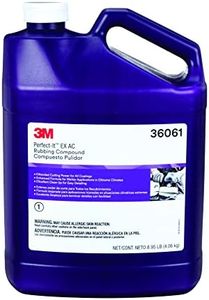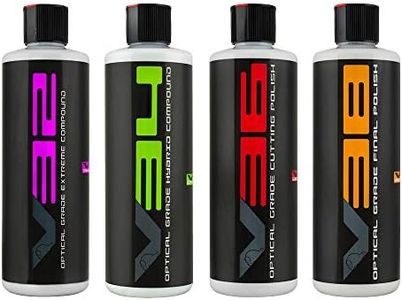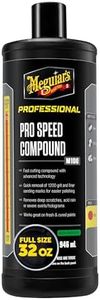We Use CookiesWe use cookies to enhance the security, performance,
functionality and for analytical and promotional activities. By continuing to browse this site you
are agreeing to our privacy policy
10 Best Car Rubbing Compounds
From leading brands and best sellers available on the web.Buying Guide for the Best Car Rubbing Compounds
Choosing the right car rubbing compound is important for maintaining your car's paint and removing surface imperfections such as scratches, oxidization, and swirl marks. The best rubbing compound for you will depend on the condition of your car's paint, your experience level, and your intended results. Understanding the key specifications will help you decide which product is suitable for your situation.Abrasiveness (Grit Level)Abrasiveness, sometimes described as grit level or cut, refers to how aggressively a rubbing compound can remove material from your car's paint surface. Higher abrasiveness can quickly smooth out deeper scratches or heavy oxidation, while lower abrasiveness is gentler and better for minor imperfections or final polishing. If your car has rough, deep scratches or very dull paint, a more abrasive compound is necessary. For minor swirl marks or light oxidation, a light or medium compound is better. Think about the surface damage severity to choose a suitable abrasiveness; less damage means you can go gentler.
Type (Paste, Liquid, or Cream)Rubbing compounds come in various formulations, like paste, liquid, or cream. Paste is typically thicker and is often chosen for hand applications or tougher jobs because it stays in place. Liquid or cream compounds are easier to spread, making them ideal for machine or quick hand application and for working on larger surfaces. If you’re a beginner or just need light correction, liquid or cream might be easier to handle; for difficult areas or heavy correction, paste may be preferable.
Ease of ApplicationSome rubbing compounds are designed to be easy to apply and wipe off, while others might require more effort and multiple steps. Products labeled as 'user-friendly' often produce less dust and are easier to clean up afterward. If you want a quick job or are new to car detailing, look for ease of application. Experienced users or those working on tough spots might opt for more heavy-duty products, even if they require more work.
Compatibility (Paint and Finish Types)Not all rubbing compounds work safely on every type of paint or finish. Some compounds are meant for traditional paint, while others are safe for clear coats or even specialty finishes. Always check whether the compound matches your car’s paint type. If you are unsure about your car's finish, choose an all-purpose or clear-coat-safe compound to reduce the risk of damage.
Intended Use (Hand or Machine Application)Rubbing compounds may be tailored for hand or machine (buffer/polisher) application. Some are suitable for either, but others work best when used a specific way. If you intend to apply by hand, select a compound that is easily spreadable and does not require forceful machine action. If you own a polisher or buffer, you may get better, faster results with a machine-friendly version. Let your tools and comfort with them guide your choice.
Residue and Clean-upSome compounds can leave residue or dust behind, which can be difficult to clean off, especially under trim or in panel gaps. Low-residue formulas make post-job cleaning easier and faster. If convenience and a tidy finish are top priorities for you, pick a compound advertised as low-dust or easy-to-remove.
